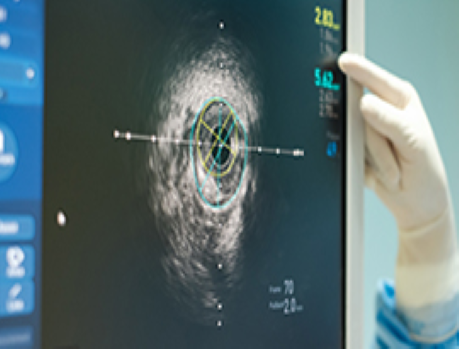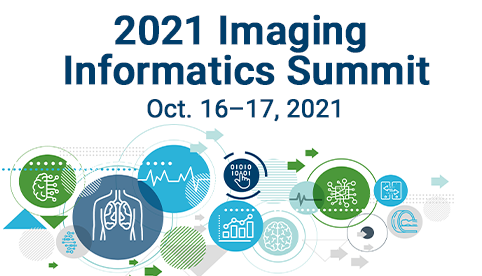Bringing Photoacoustic Imaging to Clinical Practice

Photoacoustic (PA) Imaging is an emerging imaging modality that enables imaging via optical absorption in biological tissues with acoustic resolution. Many implementations integrate active pulse/echo ultrasound in a hybrid imaging system to capitalize on well-established contrast for anatomical information. PA Imaging provides a combination of functional and morphologic information. The functional component of PA can show the neoangiogenesis and relatively greater degree of deoxygenation that occurs within and around invasive malignant masses, and thus, can help to better distinguish between benign and malignant masses than can gray scale ultrasound using only morphologic information.
The currently FDA PMA-approved indication for PA is for adjunctive diagnosis, i.e., better distinction between benign and malignant breast masses than can be achieved with gray scale ultrasound alone. The feasibility of other prospective applications within the breast imaging arena, such as using PA as a prognostic biomarker, for monitoring response to neoadjuvant therapy, and for assessment of axillary lymph nodes are being investigated or are planned to be investigated. Prospective, applications within organ systems outside of breast imaging include adjunctive diagnosis in thyroid nodules and prostate nodules/masses.
Example PA image from a handheld acquisition: This is a 6 mm grade II invasive duct carcinoma that is ER positive, PR positive, HER2 negative, and has a ki67 of 30 (luminal B molecular subtype. As is most common in luminal B subtypes, the PA exam is positive in all 3 zones. The white ROI defines the border between the internal zone (i) and boundary zone (bz). In invasive malignancies, the bz represents the thick, echogenic rim. The aqua colored ROI shows the border between the bz and the peripheral zone (pz). There is intense deoxygenated hemoglobin (red) within the internal and boundary zones and there are multiple perpendicularly oriented “radiating” green vessels (arrows in bottom center frame) within the pz.
https://pubs.rsna.org/doi/10.1148/radiol.2017172228
Example PA image in microscopy:
https://doi.org/10.1038/s41551-017-0068
The ACR began working to bring cutting-edge PA technology to its members long before market approval. The ACR Center for Research and Innovation (CRI) conducted two clinical research projects for Seno Medical , an emerging medical imaging company in the Photoacoustic Imaging space, to provide evidence to the United States Food and Drug Administration (FDA) for the approval process of the company’s Imagio® Breast Imaging System. Results from these studies were among the evidence that led to FDA Premarket Approval (PMA) for use of the Imagio Breast Imaging System in the United States in January 2021.
The ACR CRI played a critical role in helping Seno Medical prepare the market for this new imaging modality. The team at ACR CRI provided Seno Medical with highly valuable knowledge and insight that will help to better educate and train users and deliver an effective tool to the radiology community.
Now with the release of DICOM Supplement 229 , Photoacoustic (PA) Imaging Information Object Definition (IOD) for public comment following the December DICOM Working Group 6 meeting, the PA modality becomes more formally introduced to clinical practice. This supplement was created by the recently formed DICOM WG-34 Photoacoustic which was tasked to extend the DICOM Standard to support Photoacoustic Imaging. The ACR represents the user co-chair of this working group to DICOM, by extending ACR CRI’s experience from multiple reader studies and work with preclinical imaging.
Welcome the PA modality to clinical applications and DICOM. PA imaging increases the specificity of assessment compared with the device internal grayscale US alone without sacrificing the desired high sensitivity required in adjunctive diagnosis of breast masses. For those interested, please take advantage of the opportunity for public comment on this new IOD being added to the DICOM standard.
Note:
Thomas Stavros, MD, FACR, is a key breast ultrasound thought leader and Chief Medical Officer at Seno.
Thomas Stavros, MD, FACR
Bringing Photoacoustic Imaging to Clinical Practice
-

You may also like
Implementing Your AI and Informatics Strategic Road MapSeptember 17, 2021 | Juan C. Batlle, MD, MBAAs radiologists, we strive to deliver high-quality images for interpretation while maintaining patient safety, and to deliver accurate, concise reports that will inform patient care. We have improved image quality with advances in technology and attention to optimizing protocols. We have made a stronger commitment to patient safety, comfort, and satisfaction with research, communication, and education about contrast and radiation issues. But when it comes to radiology reports, little has changed over the past century.